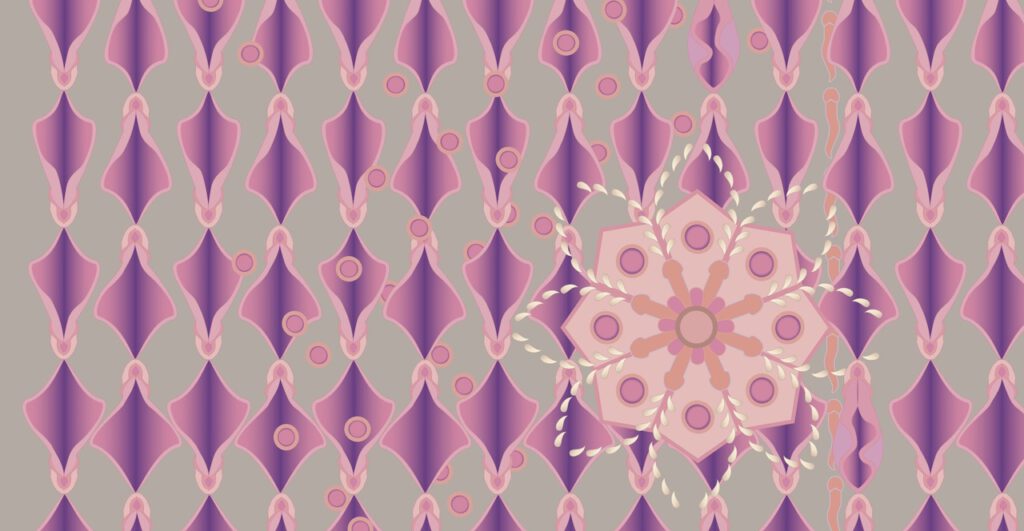we like to
Der Bildschirmschoner we like to ist dem Alltag digitaler Produktionsprozesse entlehnt. Wenn der Workflow ins Stocken gerät, der Blick in d
Der Bildschirmschoner We like to ist dem Alltag digitaler Produktionsprozesse entlehnt. Wenn der Workflow ins Stocken gerät, der Blick in der Tiefe des Bildschirms verhakt und lähmende Verzweiflung die archetypischen Arbeiter/innen des 21. Jahrhunderts erfasst, wird der Bildschirmschoner zum erlösenden Lichtstrahl in der finstereren Tiefe unproduktiver Stagnation. Von einem Moment auf den anderen, beamt er das geplagte Gemüt in eine andere Sphäre, in der es nicht mehr auf sein Zutun ankommt, damit etwas geschieht. Ebenso schöne, wie vertraute Dinge laufen da in beruhigender Gleichförmigkeit ab, wiederholen sich stets aufs Neue ohne auch nur nach Aufmerksamkeit zu verlangen – Balsam für die gepresste Seele.
Kristin Brunner nutzt nun die hypnotische Art und Weise, wie sich Bildschirmschoner in Arbeitssituationen einzuschleichen vermögen, für den subversiven Transport von Inhalten, die so gar nicht dem politisch korrekten Bilderfluss handelsüblicher Dauerrenner entsprechen.
We like to zitiert die Formensprache eines, in den Wirren des zweiten Weltkrieges verschollenen Tisches, der für Katharina die Große gefertigt worden war. Berühmt wurde er durch das erotische Bildprogramm seines Gestells, einem einmaligen Amalgam weiblicher und männlicher Genitalien, das an Radikalität seines Gleichen sucht. Ein, zwei Fotos und mythische Erzählungen berichten noch davon.
Die Künstlerin dreht dabei weiter am Rad der Verschmelzung und präsentiert menschliche Genitalien wie maritime Mollusken. Was gerade nicht auf dem Bildschirm agieren soll, tarnt sich als Standardmotiv der Bildschirmschoner: farbenfrohes freundlich über den Monitor kreisendes Meeresgetier, dessen Fortpflanzungsgebaren weit entfernt scheint von den Abläufen menschlicher Erregung. Der Kreislauf des Lebens, der mit Meeresbildern so gerne illustriert wird, findet wieder zum Menschen und seinen körpereigenen Feuchtgebieten, ohne der pornografischen Abbildung des Offensichtlichen anheim zu fallen.
Text von Siegfried Urlberger
///please scroll down for the English version///

The screensaver we We like to is borrowed from everyday digital production processes. When the workflow comes to a standstill, the view in the depths of the screen gets stuck and paralyzing despair grips the archetypal workers of the 21st century, the screensaver becomes a redeeming ray of light in the darker depths of unproductive stagnation. From one moment to the next, it beams the troubled mind into another sphere in which it no longer depends on what he did to make something happen. Things that are just as beautiful as they are familiar run off in a calming uniformity, repeating themselves over and over again without even asking for attention – balm for the pressed soul.
Kristin Brunner now uses the hypnotic way in which screensavers are able to sneak into work situations for the subversive transport of content that does not correspond at all to the politically correct flow of images of standard long-term hits. We like to uses the formal language of a table that was made for Catherine the Great and was lost in the turmoil of the Second World War. It became famous for the erotic image program of its frame, a unique amalgam of female and male genitalia that is unmatched in terms of radicalism. One or two photos and mythical stories tell about it. The artist continues to turn the wheel of fusion and presents human genitals like maritime mollusks. What is not supposed to act on the screen is camouflaged as the standard motif of the screen saver: colorful sea creatures gently circling over the monitor, whose reproductive behavior seems far removed from the processes of human arousal. The cycle of life, which is so gladly illustrated with pictures of the sea, finds its way back to humans and their body’s own wetlands without falling prey to the pornographic depiction of the obvious.
Text by Siegfried Urlberger